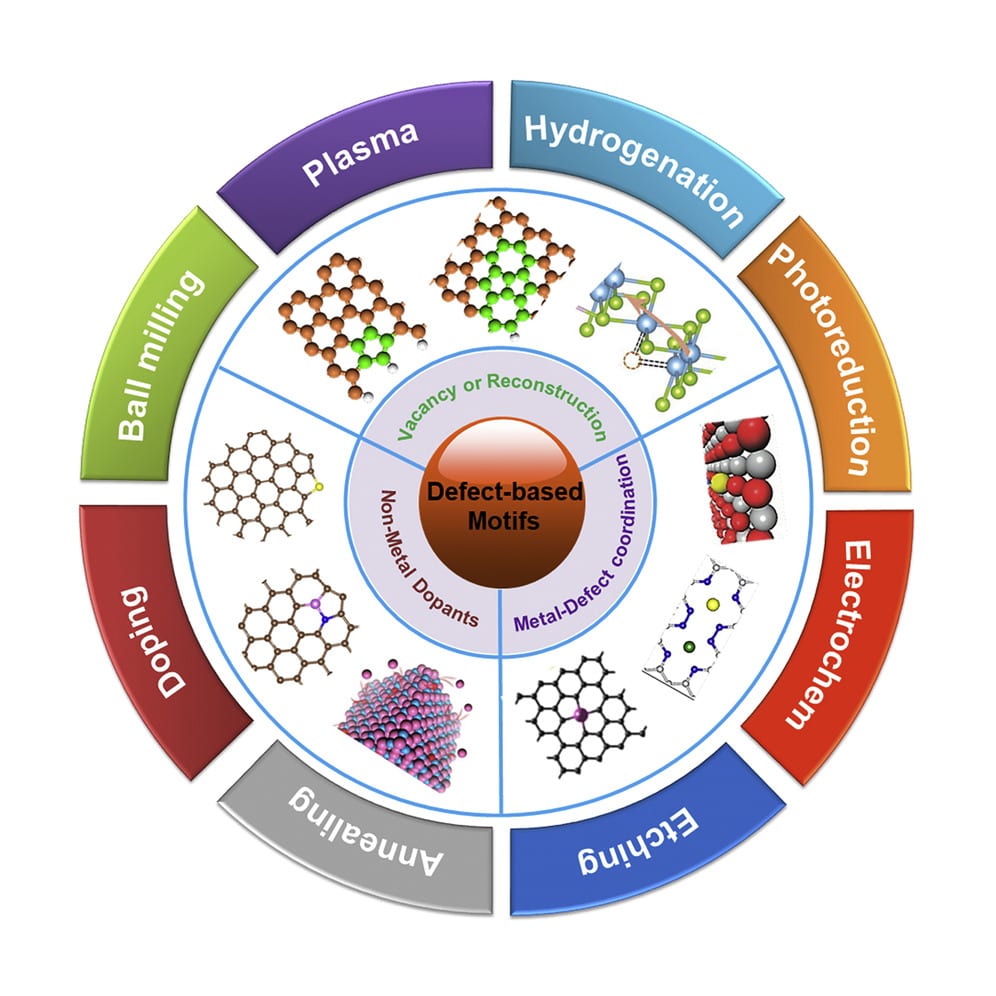We collaborate with Prof. Xiangdong Yao from Griffith University in this work to review the recent developments of defective sites in catalysis applications.
The development of advanced catalysts for efficient electrochemical energy
conversion technologies to alleviate the reliance on fossil fuels has attracted
considerable interest in the last decades. Insight into the roles of reactive sites
in nanomaterials is significant for understanding and implementing the design
principles of nanocatalysts. Recently, the essential role of defects, including vacancies, reconstructed defects, and doped non-metal (or metal)-defect-based
motifs, have been widely demonstrated to promote the diverse electrochemical
processes (e.g., O2 [or CO2] reduction reactions and H2 [or O2] evolution
reactions). Nevertheless, the in-depth exploration of the underlying defect electrocatalytic mechanism is still in its infancy. This review summarizes the state-of-the-art defect engineering strategies for designing highly efficient electrochemical nanocatalysts with special emphasis on the correlation between defect structures and electrocatalytic properties. Finally, some perspectives on the challenges and future research directions in this promising area are presented.

